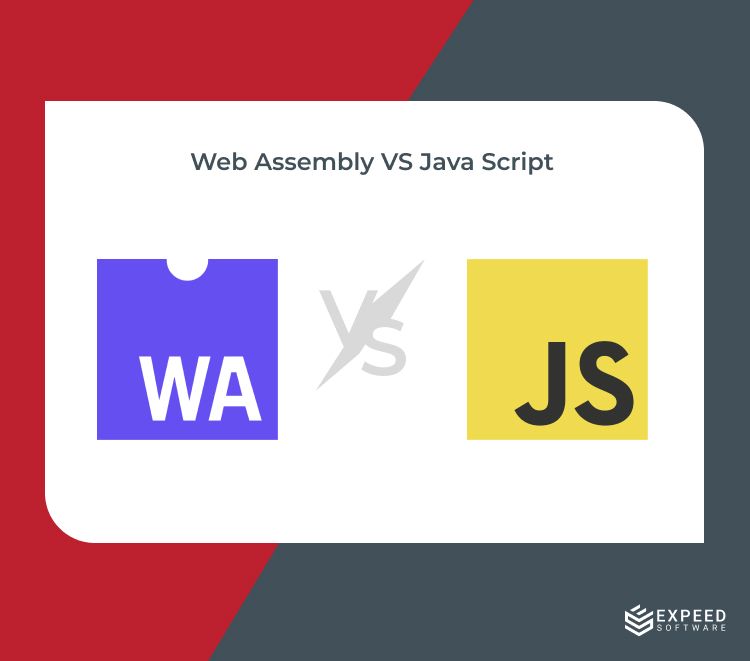Turbocharge Your Web Applications with WebAssembly (WASM)
The world of web app development is continuously evolving, a process that was set in motion with the introduction of Javascript in 1995. As time flew by, new technologies kept emerging, resulting in a significant leap in innovations in web development techniques.
However, the demand for interactive web pages has increased now more than ever, and this has pushed JavaScript to its limits. And no matter how much the developers tried to tweak the features, they could not achieve beyond a certain limit. This resulted in browser vendor wars in search of performance supremacy.
Web app development processes experienced a significant shift with the arrival of just-in-time (JIT) compilers, boosting JavaScript performance by a staggering 10X. This breakthrough not only facilitated server-side programming with Node.js but also paved the way for crafting desktop applications with Electron.
Yet, as we approach Web 3.0 with smart contracts, VR videos, and AI inferences, a fresh performance paradigm becomes imperative.
Enter WebAssembly or WASM. Join us as we explore how WASM can be leveraged to power up your web applications and how this revolutionary technology is set to drive the next wave of web innovation.
Overcoming the Setbacks of JS with a Touch of WASM
As the web continued to evolve, new features and norms emerged within browsers, setting a new standard for application performance. Now, on the cusp of Web 3.0, the need for a fresh performance paradigm is more crucial than ever. This is where WebAssembly steps in as the hero of our story, poised to drive the next wave of web innovation.
WebAssembly emerged as an intermediate representation (IR), much closer to assembly language. Its stack machine-based IR design ensured compact size and faster execution cycles, outperforming JS source code. The execution cycle involves decoding, compilation, optimization, and execution, allowing developers to run code in languages like C, C++, and Rust with near-native speed directly in the browser.

Today, WebAssembly is a W3C standard, and all major browsers support WASM, making it a viable solution for enhancing web performance. Let us see how WASM overcomes the setbacks of JS by attaining near-native execution speed.
1. Lightning Speed with Low-Level Operations
JavaScript:
// JavaScript
function add(a, b) {
return a + b;
}
// Usage
let result = add(5, 7);
console.log(result);
// Output: 12
WebAssembly (C code):
// C Code
int add(int a, int b) {
return a + b;
}
In this example, both JavaScript and C code perform a simple addition operation. C code will be compiled into WebAssembly before it is shipped to the browser. The difference will be in how they are executed in the browser. While JavaScript will be interpreted, WebAssembly will be executed at almost native speed in the browser. Any operations, such as mathematical operations, that require CPU power will perform better with WebAssembly.
2. Efficient memory management
JavaScript (Array Operations):
// JavaScript
let array = new Array(1000000).fill(1);
let sum = array.reduce((acc, val) => acc + val, 0);
console.log(sum);
// Output: 1000000
WebAssembly (C code):
// C Code
int sum(int* array, int length) {
int result = 0;
for (int i = 0; i < length; i++) {
result += array[i];
}
return result;
}
Here, both JavaScript and WebAssembly calculate the sum of an array. However, the WebAssembly version directly manipulates memory through C code, allowing for efficient memory management. This is particularly beneficial for handling large datasets or performing memory-intensive operations.
3. Parallelism and Threading
JavaScript (single-threaded):
// JavaScript (single-threaded)
function fibonacci(n) {
if (n <= 1) return n;
return fibonacci(n – 1) + fibonacci(n – 2);
}
// Usage
let result = fibonacci(40);
console.log(result);
WebAssembly (C code with threads):
// C Code with threads
#include <emscripten.h>
EMSCRIPTEN_KEEPALIVE
int fibonacci(int n) {
if (n <= 1) return n;
if (n < 30) return fibonacci(n – 1) + fibonacci(n – 2);
int result1, result2;
#pragma omp task shared(result1)
result1 = fibonacci(n – 1);
#pragma omp task shared(result2)
result2 = fibonacci(n – 2);
#pragma omp taskwait
return result1 + result2;
}
The JavaScript version calculates the Fibonacci sequence in a single-threaded manner. The WebAssembly version, however, introduces parallelism using OpenMP directives in C code. This enables concurrent execution of tasks, significantly improving the speed of computationally intensive operations such as Fibonacci calculations.
Integrating WebAssembly into Your Workflow
Even though WebAssembly is faster and more efficient, it is not here to replace JavaScript entirely. Still, WebAssembly doesn’t have access to the browser’s DOM. Therefore, Javascript and WebAssembly must work together in the browser. Utilize WebAssembly to improve the performance of CPU-intensive operations while allowing JavaScript to handle DOM manipulation. Before diving into WebAssembly, evaluate your existing tech stack. Identify performance bottlenecks and areas where an efficiency boost can significantly impact the user experience. Choose use cases that align with your performance goals carefully.
1. Tooling and Compilation
Tooling for web-assembly-based development is still evolving. Emscripten is a well-known tool to compile your existing code into WebAssembly. However, it is to be noted that Emscripten mostly compiles codes of languages having LLVM based compilers.
If you are using .NET as a tech stack, Microsoft’s Blazor is a web-assembly-based framework. Blazor and Visual Studio are probably the best development tool sets available as of now.
2. Testing and quality assurance
Rigorous testing is key to a successful transition. Test WebAssembly modules in isolation and integrate them gradually, addressing compatibility issues for a smooth user experience.
3. Progressive Rollout
Adopt a progressive rollout strategy to avoid disrupting your current workflow. Integrate WebAssembly modules incrementally, allowing for continuous testing and refinement.
Move Faster with WebAssembly
WebAssembly is an exciting component of web development that can propel web app development into a new era of performance excellence. As we navigate the complexities of the latest web trends, the need for efficient and powerful technologies such as WebAssembly becomes clear. Remember, it is not a complete replacement for JavaScript. If used wisely, it can improve the performance of parts of your applications that need raw CPU power.
At Expeed Software, we understand the power of WebAssembly and are at the forefront of web development innovation. While WebAssembly plays an important role in improving web performance, our expertise goes beyond that. We specialize in complete web development solutions, ensuring that your applications are not only efficient but also future-proof. We bring experience in Blazor to help with WebAssembly-based application development.
Contact Expeed Software today, where our dedication to web app development excellence meets the transformative power of technologies like WebAssembly. Let’s collaborate to shape the future of your web applications.

Expeed Software is a global software company specializing in application development, data analytics, digital transformation services, and user experience solutions. As an organization, we have worked with some of the largest companies in the world, helping them build custom software products, automate processes, drive digital transformation, and become more data-driven enterprises. Our focus is on delivering products and solutions that enhance efficiency, reduce costs, and offer scalability.


